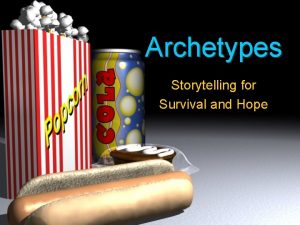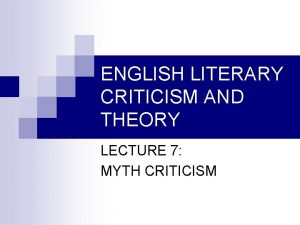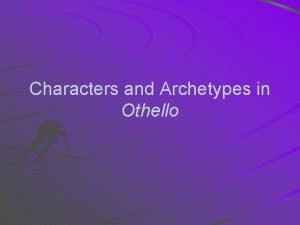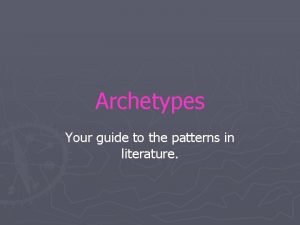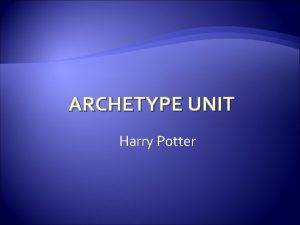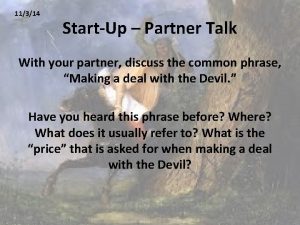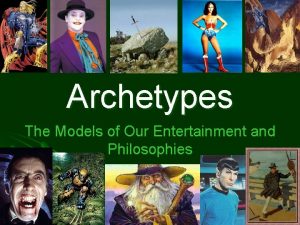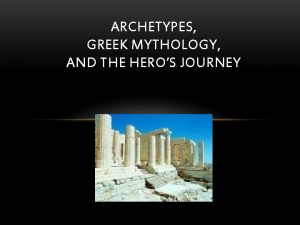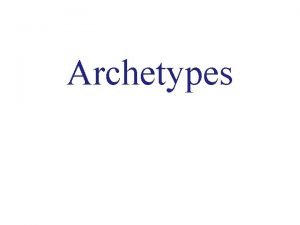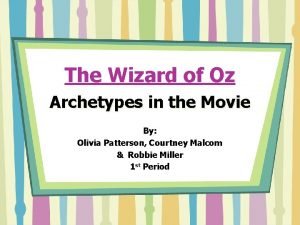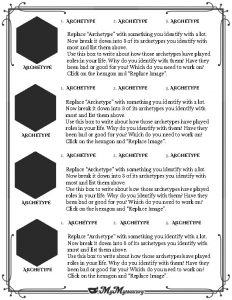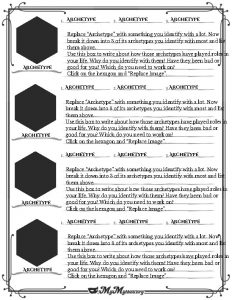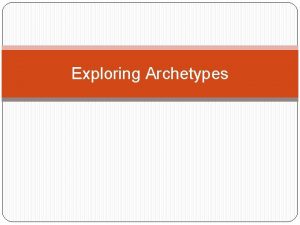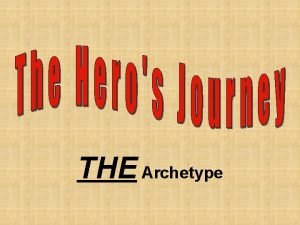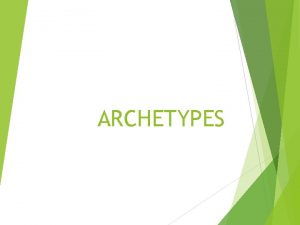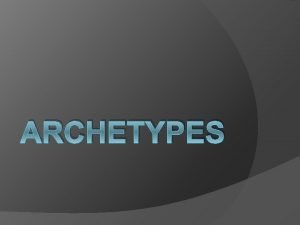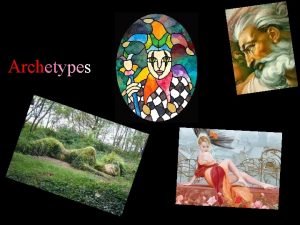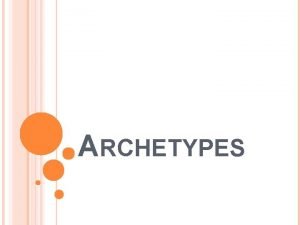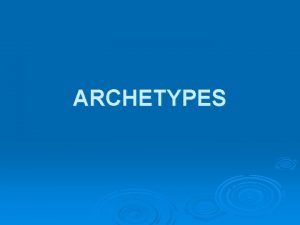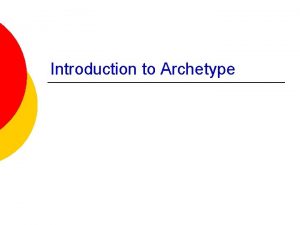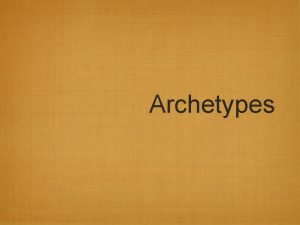Exploring Archetypes What is an archetype l l













- Slides: 13

Exploring Archetypes

What is an ‘archetype’? l l Archetypes are recurring character types (and relationships), and/or patterns of symbols or situations found in the mythology, religion, and stories of all cultures The Hero is a prime example 2

Characteristics of The Hero l constantly confronted by enemies which he must overcome l a man of action l good at fighting and uses a weapon of some kind to achieve victory l always victorious and is celebrated by the community or people he saves 3

Carl Jung’s ideas about archetypes l l l Just as an individual may possess a personal unconscious, a culture too has a collective unconscious Fairy tales and myths are like the dreams of an entire culture, springing from the collective unconscious Archetypes are constant throughout all times and cultures, in the dreams and personalities of individuals as well as in the shared mythic imagination of the world 4

Recurrent archetypes and their functions Archetype Primary function in a narrative l Hero to serve and sacrifice l Mentor to guide l Threshold guardian to test l Shapeshifter to question and deceive l Shadow to destroy 5

The Hero: to serve and sacrifice l l someone who is willing to sacrifice their own needs on behalf of others They are propelled by universal drives that we can all understand: the desire to be loved/understood, to succeed, survive, be free, get revenge, right wrongs or seek self expression 6

The Hero: to serve and sacrifice l l Hero’s most important quality is self-sacrifice – ability to give up something of value or of himself on behalf of ideal or group They must confront death, threat of death, danger, loss or failure – they die (perhaps symbolically) and are reborn The sacrifice may be loved one, friend, personality trait, way of life, etc. Flaws and weaknesses humanise the character, e. g. inner doubts, errors in thinking, guilt from past, fear of future 7

The mentor: to guide l l A mentor is usually a positive figure/archetype who aids/trains the hero Usually a source of knowledge and inspiration for the hero In mythology, this is usually a wise old man or woman but generally it can be those characters who teach and protect heroes and give them (special) gifts Has special powers all his own 8

The shadow: to destroy l l The shadow is the character who represents the energy of the dark side, the unexpected, the unrealised or the rejected The shadow is referred to as the villain, the antagonist or the enemy They are usually dedicated to the death, destruction or defeat of the hero Some are not so hostile – they may be characters who are simply in competition with the hero, i. e. who are after the same goal but who disagree with the hero’s tactics 9

The threshold guardian: to test l l All heroes encounter obstacles on road to adventure – at each ‘gateway’ or new stage of new world, hero is confronted with threshold guardians, placed to keep unworthy from entering They usually present a menacing face to the hero but, if properly understood, can be overcome, bypassed and sometimes, turned into allies Threshold guardians are not the main villain but can be connected to them They are usually lieutenants of villains, lesser things, mercenaries hired to guard the main headquarters or secret 10 helpers to test the hero’s willingness or skill

The threshold guardian: to test l l l Threshold guardians usually serve/work with or protect the main villain from the hero – they warn of the hero’s approach These characters function to limit the development of hero’s experience – they hold back the growth and progress of the hero The dramatic function of threshold guardians is mainly to test the hero When a hero confronts one of these figures, they must solve a puzzle or pass a test Popular way of getting by threshold guardians is by getting into their skins, i. e. by disguising himself as one of them; temporarily becoming the enemy 11

The shapeshifter: to question and deceive l l l Shapeshifters may be positive or negative figures They may be helpful to the hero or destructive to them In some stories it’s the task of the hero to figure out which side, positive or negative, he is dealing with The dramatic function of the shapeshifters is that they bring doubt and suspense into a story Femme fatales are a common type of shapeshifter: the woman as a temptress or destroyer 12

Archetypal story lines The hero’s Journey l The search for the Father l The love affair/love triangle l Revenge l Rebuilding of a shattered life l 13
 Archetypes storytelling
Archetypes storytelling Northrop frye archetypes
Northrop frye archetypes Archetypes in othello
Archetypes in othello Examples of archetypes in literature
Examples of archetypes in literature Literary archetypes
Literary archetypes Haven vs wilderness
Haven vs wilderness Light archetype examples
Light archetype examples Archetypes in the devil and tom walker
Archetypes in the devil and tom walker Archetypal literary definition
Archetypal literary definition Innate wisdom vs. educated stupidity examples
Innate wisdom vs. educated stupidity examples Archetype greek mythology
Archetype greek mythology The initiation archetype
The initiation archetype Elements of romanticism in the devil and tom walker
Elements of romanticism in the devil and tom walker Wizard of oz archetypes
Wizard of oz archetypes
